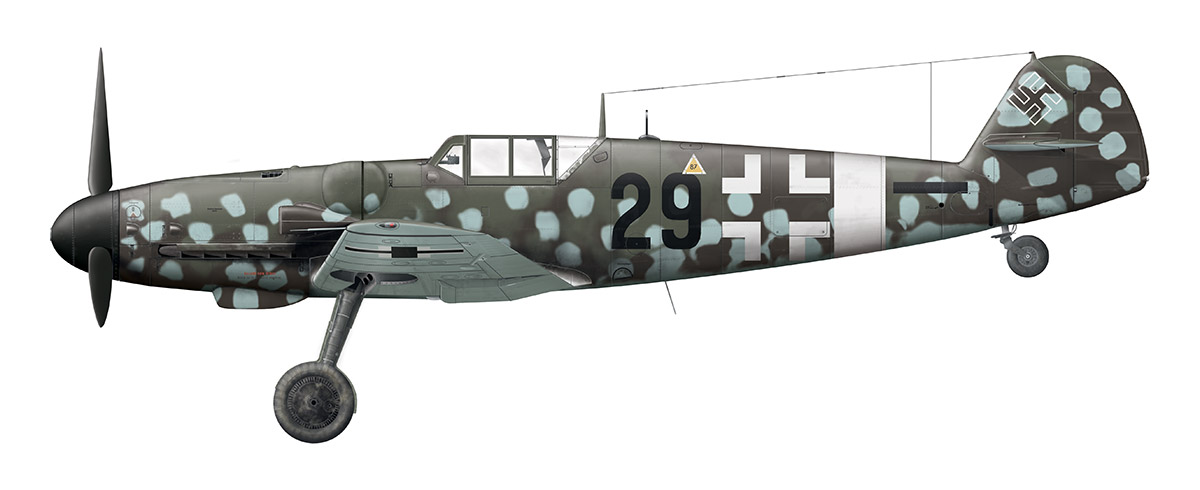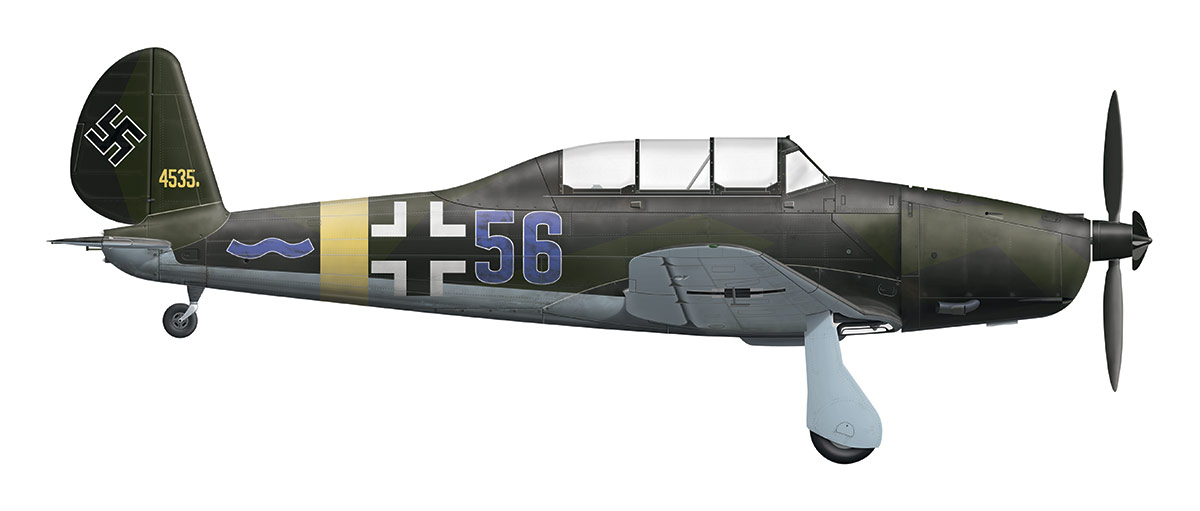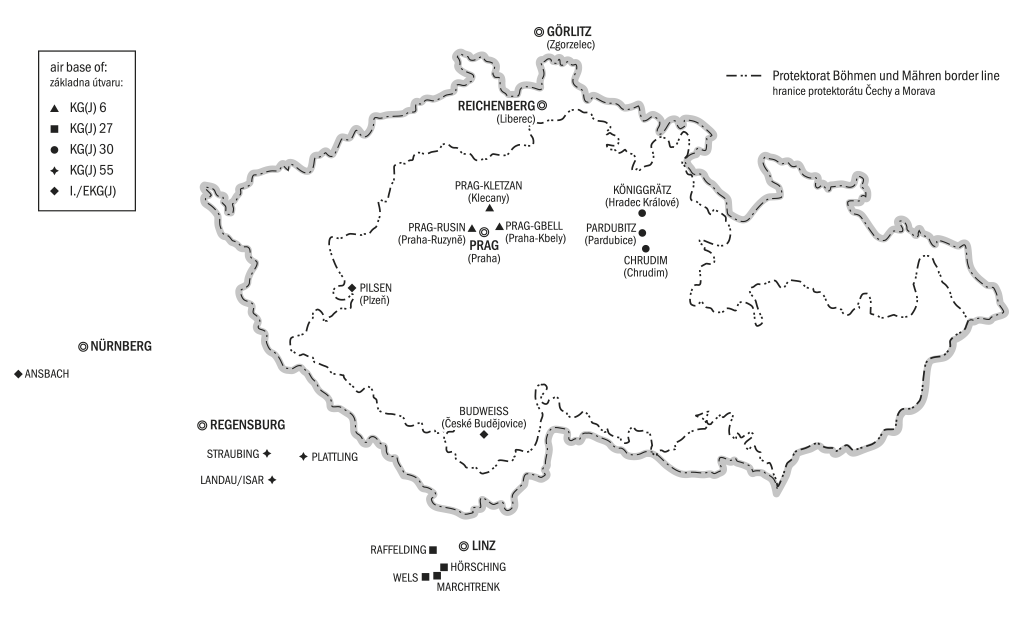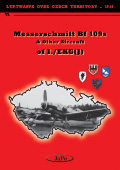World War II over Czech Territory books
Messerschmitt Bf 109s & Other Aircraft of I./EKG(J)
Tomáš Poruba, Jan Vladař
There has been realized an operation within the Luftwaffe since autumn 1944 to increase number of shortage fighter pilots by retraing of bomber pilots. This transformation and pilot training have been described in our titles “Messerschmitt Me 262s of KG & KG(J) units” and “Messerschmitt Bf 109s of KG(J) 6”. This study deals with the I./EKG(J) which should ensure to continuously replenish the personnel strength of KG(J) units and to substitute expected losses and which activities were mostly connected with Protectorate Bohemia and Moravia. The title extends number of titles with this theme to the trilogy.As is usual in the “Luftwaffe over Czech Territory – 1945” line the historical description is accompanied by historical documents, tables, b/w and colour photos and description of 38 aircraft from that 28 Messerschmitt Bf 109s, 5 Focke-Wulf Fw 190s and 5 Arado Ar 96Bs.
| publish date | pages | photos | colour profiles | language | cover |
|---|---|---|---|---|---|
| 2021 | 184 | 250 | 38 a/c | English | Softbound |
ISBN: 978-80-907049-3-0
Examples of machines analyzed in the publication

The Bf 109G-6/U4, “Black 29” belonged to the 2./EKG(J) (later 18./EJG 2). The aircraft underwent repair at the Brinker Eisenwerk, Max. H. Müller company in Wunstorf and has been left in Pilsen in May 1945.

Arado Ar 96B-1, W.Nr. 4535, originally belonging to the 20./EJG 2 (ex- 4./EKG(J)), was found after the end of the war in the hangar of Pilsen airport. It is connected to the Czech territory not only by its place of the finding, as it was produced by Avia, Prague Letňany in 1942.
Corrections of first edition
page 8, map scheme
Locations of KG(J) 27 air bases (south of Protektorat Böhmen und Mähren) are missing. Correct map is below.

page 74, column 1, paragraph 3, sentence 2
Wrong
Should the number indeed be W.Nr. 200461, then the plane was a Bf 109G-8/R5* manufactured by WNF plant in August 1944.
Correct
Should the number indeed be W.Nr. 201461, then the plane was a Bf 109G-8/R5* manufactured by WNF plant in August 1944.
page 112, localization of an image of Fw 190A-7 “Blue 17” of 4./EKG(J)
An observant reader of our book pointed out a mistake in the localization of an image of Fw 190A-7 “Blue 17” of 4./EKG(J). Our book stated that the aircraft was abandoned at Berlin-Tempelhof, while the airfield was actually Berlin-Gatow, as can be seen from the type and lay-out of hangars in the picture.
It is not quite clear, why “Blue 17” ended up at the airfield. The repair (engine replacement) referred to in the text, which would have been appropriate due to the presence of Fw 190 repair center at Tempelhof, seems unlikely, as there were no such establishments at Gatow. As a matter of fact, I./EKG(J) had no links to the location whatsoever.
On the other hand, once the unit was disbanded, its equipment was reassigned to other units and used for various purposes, including non-combat tasks. It is due to note, that Berlin-Gatow was the last operational airfield in Berlin, which was being used until 26th April 1945 at least. At night from 25th to 26th April, for instance, the last Luftwaffe commander, General Ritter von Greim, accompanied by Hana Reitsch landed at the base and then attempted to reach Hitler’s bunker in downtown Berlin in a Fi 156. In an interrogation after the war, Hana Reitsch recounted they had arrived at Gatow from Rechlin in a Fw 190.
We are not claiming that Fw 190A-7, “Blue 17” was the plane involved in this particular mission. Several Fw 190A, F, and D actually remained at the airfield together with a considerable number of other aircraft. On the other hand, the event provides an illustrative example of various purposes the airfield served at the end of the war.




